Anxiety
Untangling anxiety: what’s happening in your brain?
Understanding the wires: the science behind anxiety and how to manage it
Anxiety. It’s more than just that fluttery feeling you get before a presentation or the general worry about an upcoming bill. It’s a deeply ingrained biological response a bit like a fire alarm designed to keep us safe. But just like a fire alarm that goes off when you burn toast anxiety can sometimes become a bit oversensitive. When it’s overwhelming persistent or seems to be triggered by things that aren’t actually dangerous it can start to really impact our daily lives. Understanding the science behind anxiety can help us demystify it making it feel less like a monster under the bed and more like a manageable part of our lives.
The brain’s alarm system: fight flight or freeze
At the heart of anxiety lies the amygdala a small almond-shaped structure deep within our brains. Think of it as the brain’s security guard always scanning for potential threats. When the amygdala perceives danger whether real or imagined it hits the alarm button triggering the well-known fight flight or freeze response. This is an evolutionary survival mechanism designed to help us react quickly to threats. Imagine being faced with a sabre-toothed tiger. You’d want to be able to run fight or freeze instantly right?
However in modern life the ‘threats’ we experience aren’t usually physical dangers like predators. Instead they are social pressures work stress or personal fears. The amygdala however doesn’t differentiate between a looming deadline and a life-or-death situation. It simply signals the body to prepare for danger. It’s like the security guard mistaking a shadow for an intruder.
The role of stress hormones
Once the amygdala is activated the body releases stress hormones like adrenaline and cortisol. These chemicals cause physical changes including:
- Increased heart rate to pump more blood to the muscles.
- Faster breathing to increase oxygen intake.
- Heightened alertness and sharpened senses.
- Suppression of non-essential functions like digestion.
In short bursts this response can be beneficial. It keeps us focused and energised. Imagine needing a burst of energy to finish a project on time. But when the brain stays in a heightened state of alert for prolonged periods chronic anxiety can develop leading to fatigue digestive issues and even long-term health problems. It’s like running a car engine at full speed for hours on end. It’s going to wear out.
Anxiety and the thinking brain
While the amygdala reacts automatically the prefrontal cortex the rational thinking part of the brain can help regulate anxiety. It’s like the wise old owl that assesses the situation determines whether the threat is real and can send signals to calm the amygdala down.
However in people who experience chronic anxiety the connection between the prefrontal cortex and the amygdala may not be as strong. This means that logical thinking (“I’m safe there’s no real danger”) struggles to override the fear response. It’s like the wise old owl is having trouble getting through to the overexcited security guard.
This is why strategies like mindfulness cognitive behavioural therapy (CBT) and grounding techniques work. They strengthen the prefrontal cortex’s ability to regulate anxious responses. They are like training the wise old owl to speak louder and more clearly.
The body’s memory of anxiety
The brain is constantly learning. If it perceives a situation as threatening it creates a ‘fear memory’ to help protect you in the future. This is why past experiences can shape anxiety: if a stressful event triggers anxiety once the brain is more likely to react the same way the next time a similar situation arises.
For example if someone has a panic attack in a supermarket their brain may associate supermarkets with danger even though logically they know it’s safe. This leads to avoidance behaviours reinforcing the anxiety cycle. It’s like the brain creating a mental shortcut that says “supermarket equals danger”.
Rewiring the brain: the power of neuroplasticity
The good news is that the brain is adaptable. Through neuroplasticity it can form new neural pathways meaning that with consistent practice we can retrain our brains to respond differently to anxiety. It’s like building new roads in your brain.
Techniques that support this include:
- Exposure therapy or graded activity: gradually facing feared situations to teach the brain they are safe. This is where occupational therapy can be very helpful. Occupational therapists can help you to gradually re-introduce feared activities in a safe controlled manner. This will help to normalise these activites.
- Mindfulness meditation: strengthening the connection between the prefrontal cortex and the amygdala.
- Breathing exercises: activating the parasympathetic nervous system to counteract the stress response.
- Reframing thoughts: using CBT techniques to challenge and change anxious thinking patterns.
Final thoughts
Anxiety isn’t just ‘in your head’. It’s a complex interaction between brain structures hormones and learned experiences. But understanding the science behind it can empower us to manage it more effectively. By working with our brains rather than against them we can harness anxiety as a tool for awareness resilience and growth.
If you are struggling with anxiety please reach out for support. Occupational therapists are trained to help people to manage anxiety and to help them to live fulfilling lives. Please contact us today to learn how occupational therapy can help you.
Step into change: your toolkit for everyday wellbeing
Start your journey today with our self-help guides, resources and practical, supportive tools designed to help you take that first step towards positive, lasting change. Whether you’re building a routine, managing emotions or finding balance, there’s something here to support you.

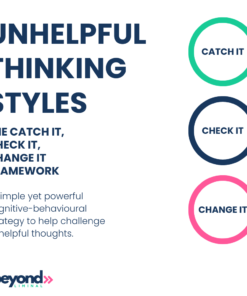
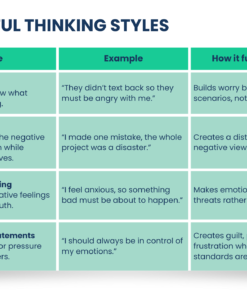
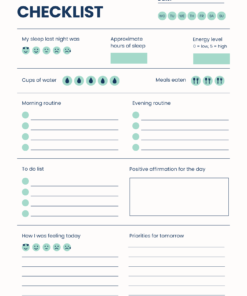
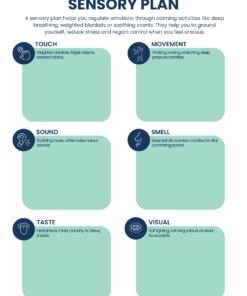
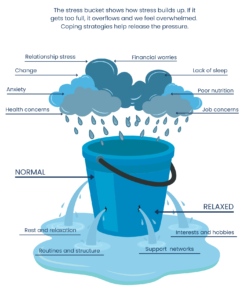
Very helpful information.
Thank you for putting this together.
Fiona